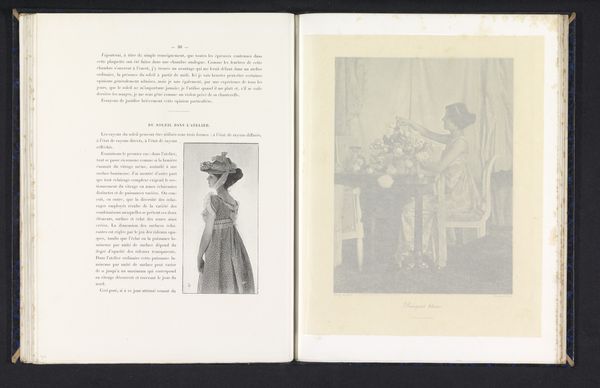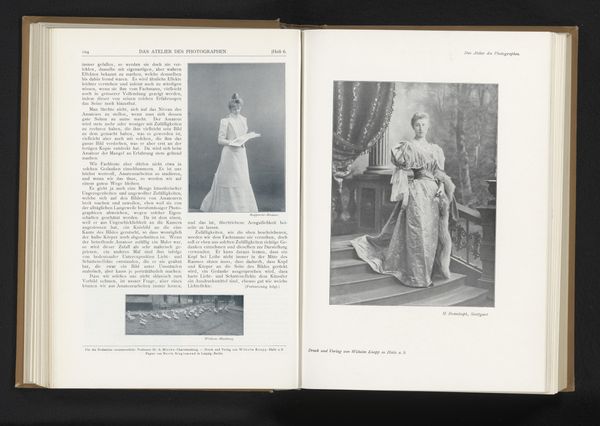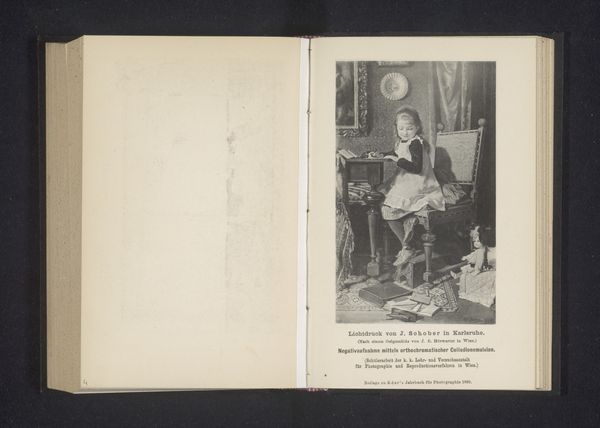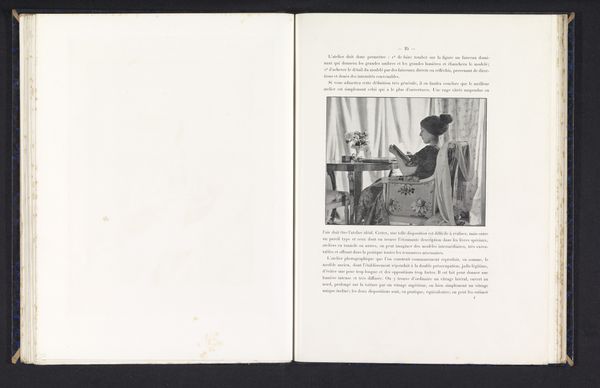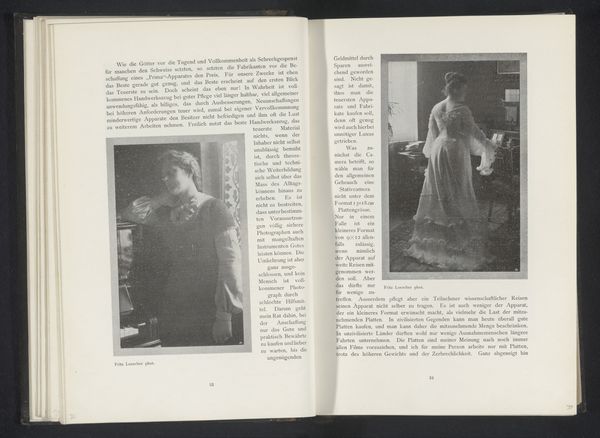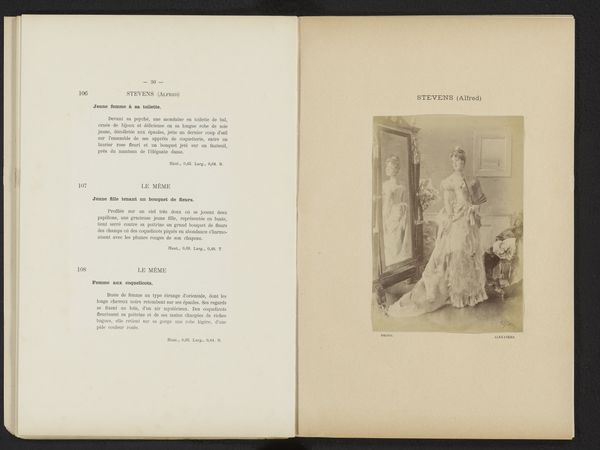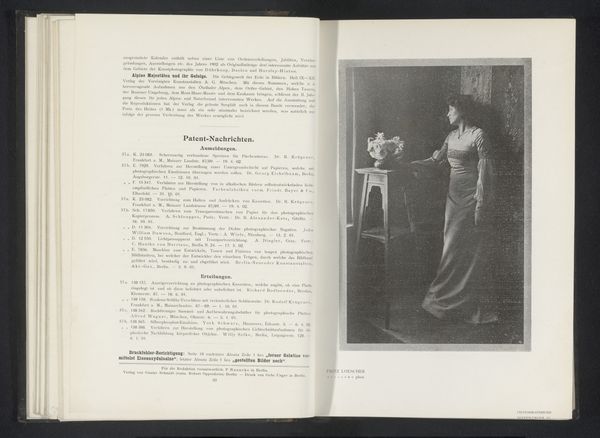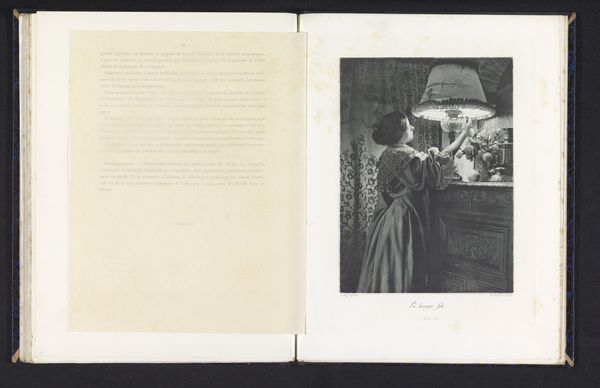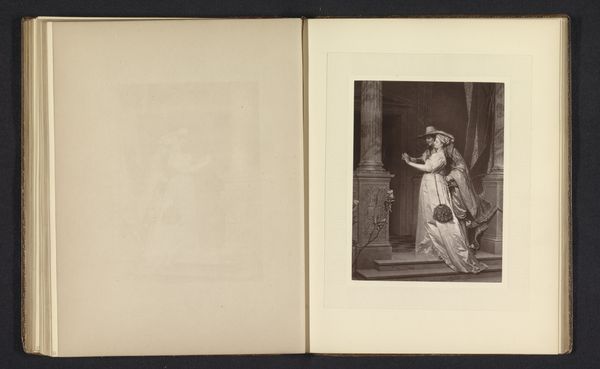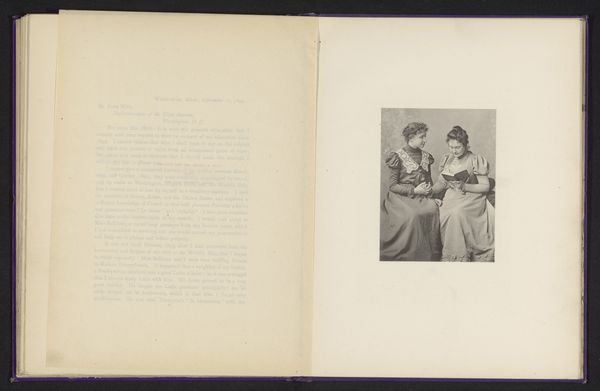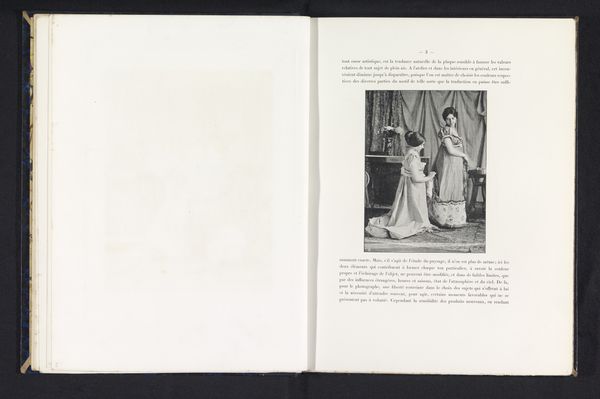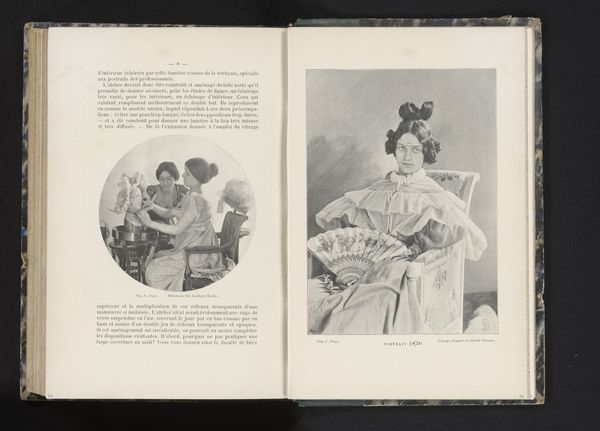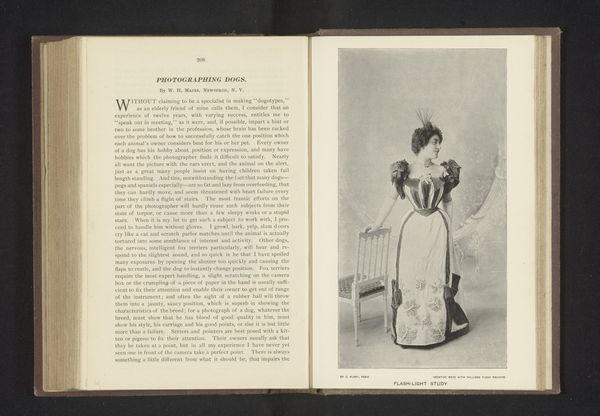
photography
portrait
script typeface
aged paper
script typography
pictorialism
hand drawn type
photography
hand-drawn typeface
intimism
stylized text
thick font
symbolism
handwritten font
classical type
historical font
Dimensions: height 218 mm, width 165 mm
Copyright: Rijks Museum: Open Domain
Curator: This image is titled "Bloemschikkende vrouw in een interieur", which translates to "Woman Arranging Flowers in an Interior," created by Constant Puyo before 1896. What are your initial impressions? Editor: It feels incredibly staged, doesn’t it? A performance of domesticity almost. The light is so soft, and she's posed so deliberately, like a tableau vivant. Curator: Absolutely. Puyo was a key figure in the Pictorialism movement, which emphasized photography as art. Think about the darkroom manipulation, the choices of paper, the very deliberate blurring... It all served to elevate photography from mere reproduction to artistic expression, aligning it with painting. This image really shows how photography was grappling for legitimacy within the established art world. Editor: Yes, and the "handwritten font" caption below the photo suggests a yearning to be appreciated among classical works. Puyo and his circle used photography to portray intimacy, with symbolic aesthetics often favored in upper-middle class home settings and decor. We have a window into this culture and an almost anthropological view of social hierarchies, given access to materials like flowers and decorative pottery. It certainly reinforces ideas of idealized femininity and domesticity. Curator: Precisely. This photograph wouldn't exist, or look as it does, without specific social, cultural, and technical contexts. From the manufacturing of the photographic materials to the sitter’s attire, to the access to bourgeois trappings: a curated selection, reflecting and reinforcing societal expectations. Editor: It makes you wonder about the woman herself – was she aware of being a prop in this staged narrative, a reflection of bourgeois sensibilities? Curator: It's a reminder that even seemingly intimate scenes are constructed, shaped by social and economic forces at play during the birth of the photography as a prominent artistic medium. Editor: A perfect blend of artifice and reality, prompting us to examine the underlying structures influencing both the creation and reception of such images. Curator: A final note - this photograph offers a fascinating snapshot not only of a woman and her flowers, but the performance of photography within broader social constructs.
Comments
No comments
Be the first to comment and join the conversation on the ultimate creative platform.
